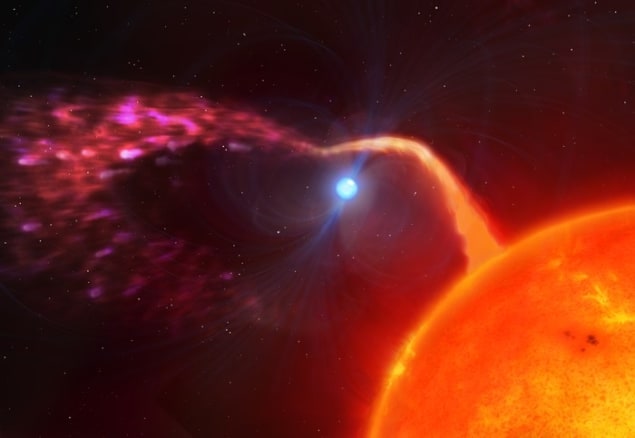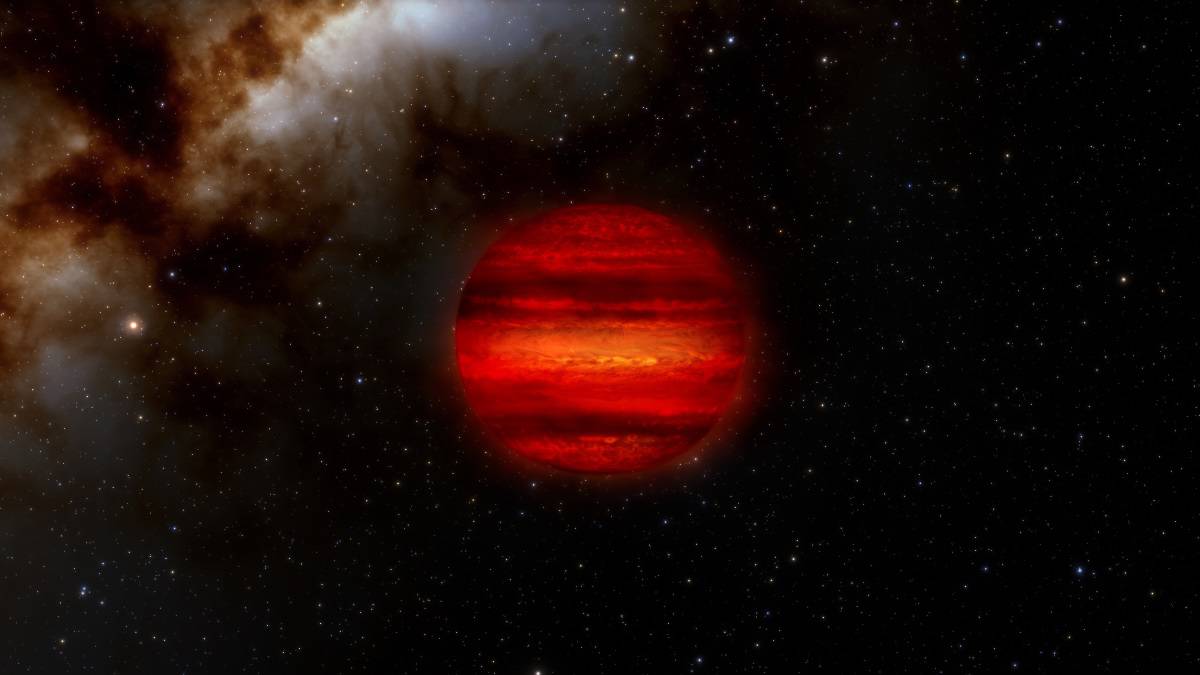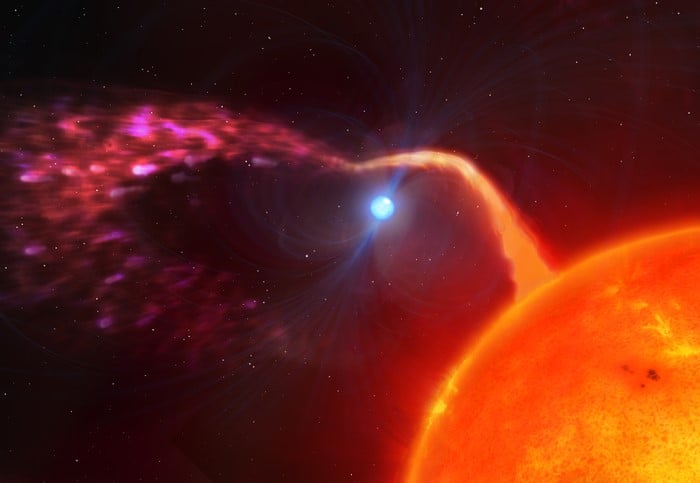
The fastest-spinning white dwarf ever seen is flinging plasma into interstellar space – according to observations made by astronomers in the UK. Ingrid Pelisoli at the University of Warwick and colleagues have combined data from two instruments to show that binary star system J0240+1952 contains a highly magnetized white dwarf, which completes a full rotation in just 24.9 s. Their discovery is the second known example of such a magnetic propeller system.
Cataclysmic variables (CVs) are binary star systems in which a dense white dwarf star accretes matter from its companion star. As the accreted mass falls onto the equator of the white dwarf, it causes the star to spin ever faster. However, if the white dwarf acquires a strong magnetic field, this can deflect some of the infalling matter, which is propelled out into interstellar space in the form of a glowing plasma.
The first such “propeller star” was identified in a pair of studies done in 1943 and 1956, which focussed on unusually strong, irregular flares in the brightness of a CV on minute-long timescales. Called AE Aquarii, this binary system remained unique until 2020, when observations at the LAMOST telescope in China revealed striking similarities between AE Aquarii and a binary system called LAMOST J024048.51+195226.9 (shortened to J0240+1952).
At first, fluctuations in the brightness of J0240+1952 were too rapid and dim to confirm the presence of a rapidly spinning, highly magnetized white dwarf like AE Aquarii. To address this, Pelisoli’s team observed the system using the highly sensitive, high-speed HiPERCAM instrument on the 10.4 m Gran Telescopio Canarias in the Canary Islands.
Bright spots
This measurement confirmed that J0240+1952 does contain the second known example of a magnetized propeller star. Most of the matter that is stripped from the companion star is flung into space at speeds of roughly 3000 km/s. The rest of the matter flows along the white dwarf’s magnetic field lines to accrete onto its surface – where it gathers in bright spots and rotates in and out of view.

Spinning brown dwarfs might have reached their speed limit
By observing the resulting brightness fluctuations, Pelisoli’s team confirmed that the star completes a full rotation every 24.9 s. This makes it the fastest spinning white dwarf observed to date: almost 20% faster than the previous record. In comparison, the Earth rotates once every 24 h and the Sun once every 27 d.
As the second known example of a magnetic propeller system, J0240+1952 offers astronomers the opportunity to confirm models that were developed to describe AE Aquarii. The observation also suggests that rather than being an anomalous occurrence, propellers may readily form under just the right circumstances.
The research is described in Monthly Notices of the Royal Astronomical Society: Letters.
